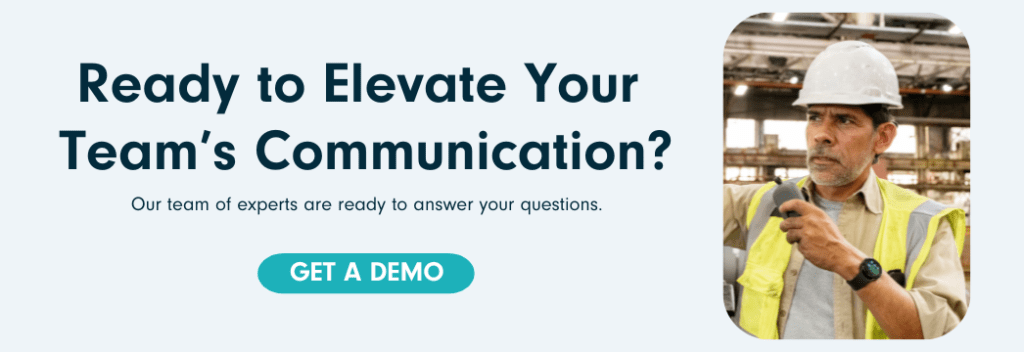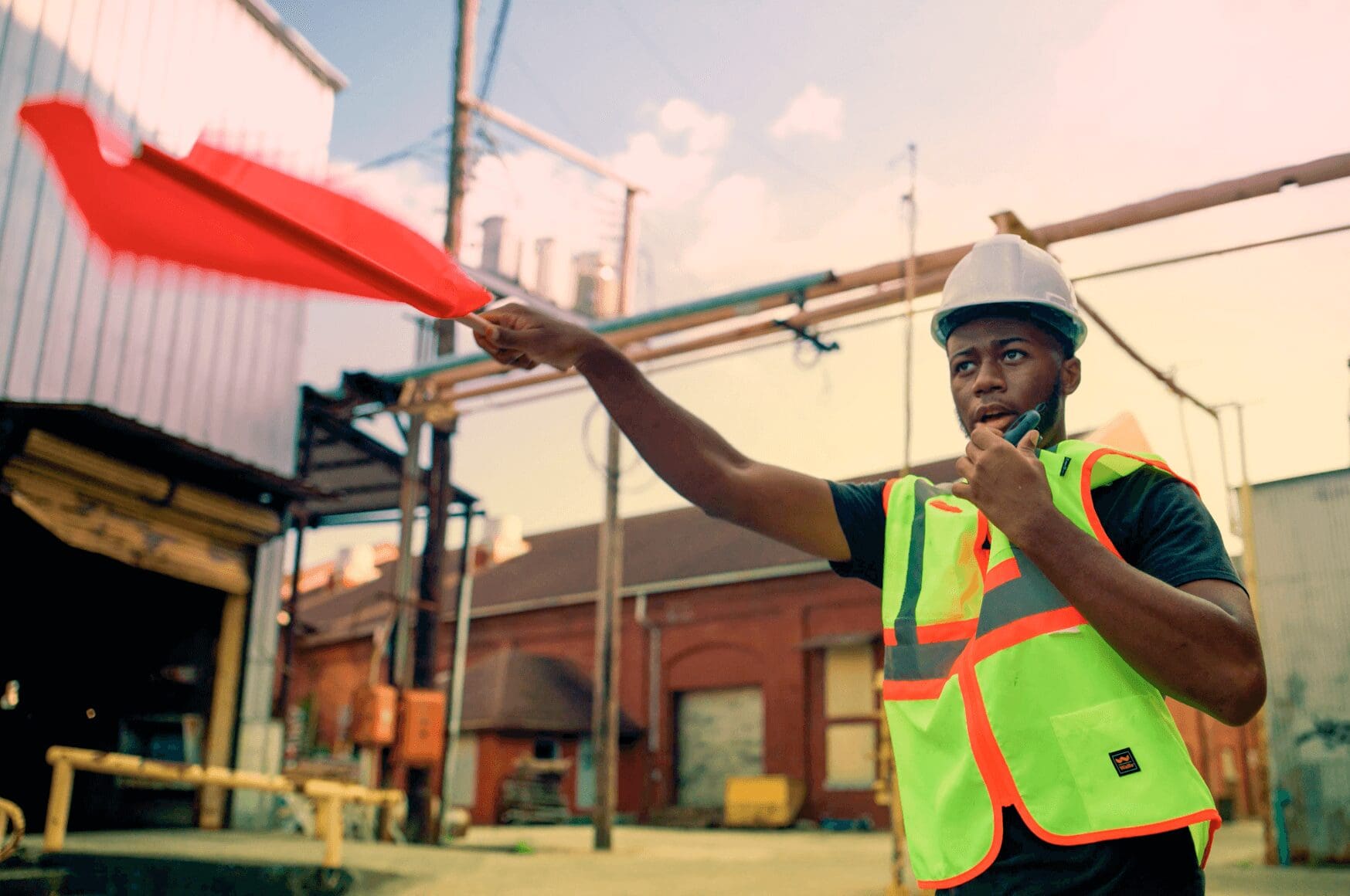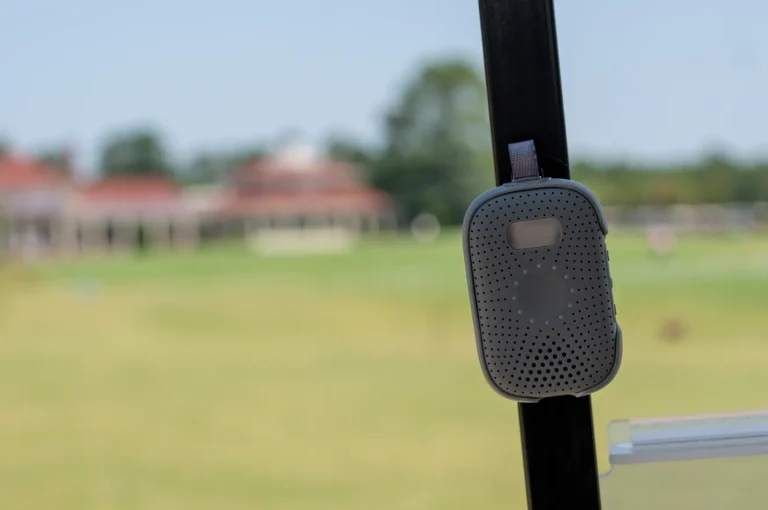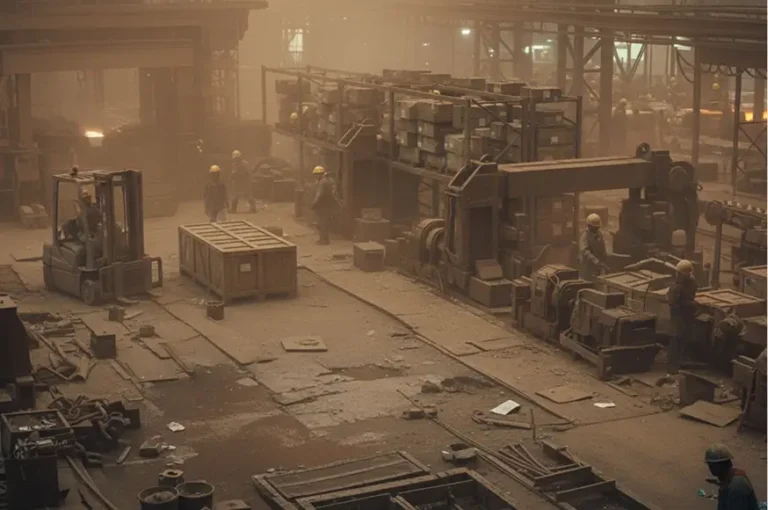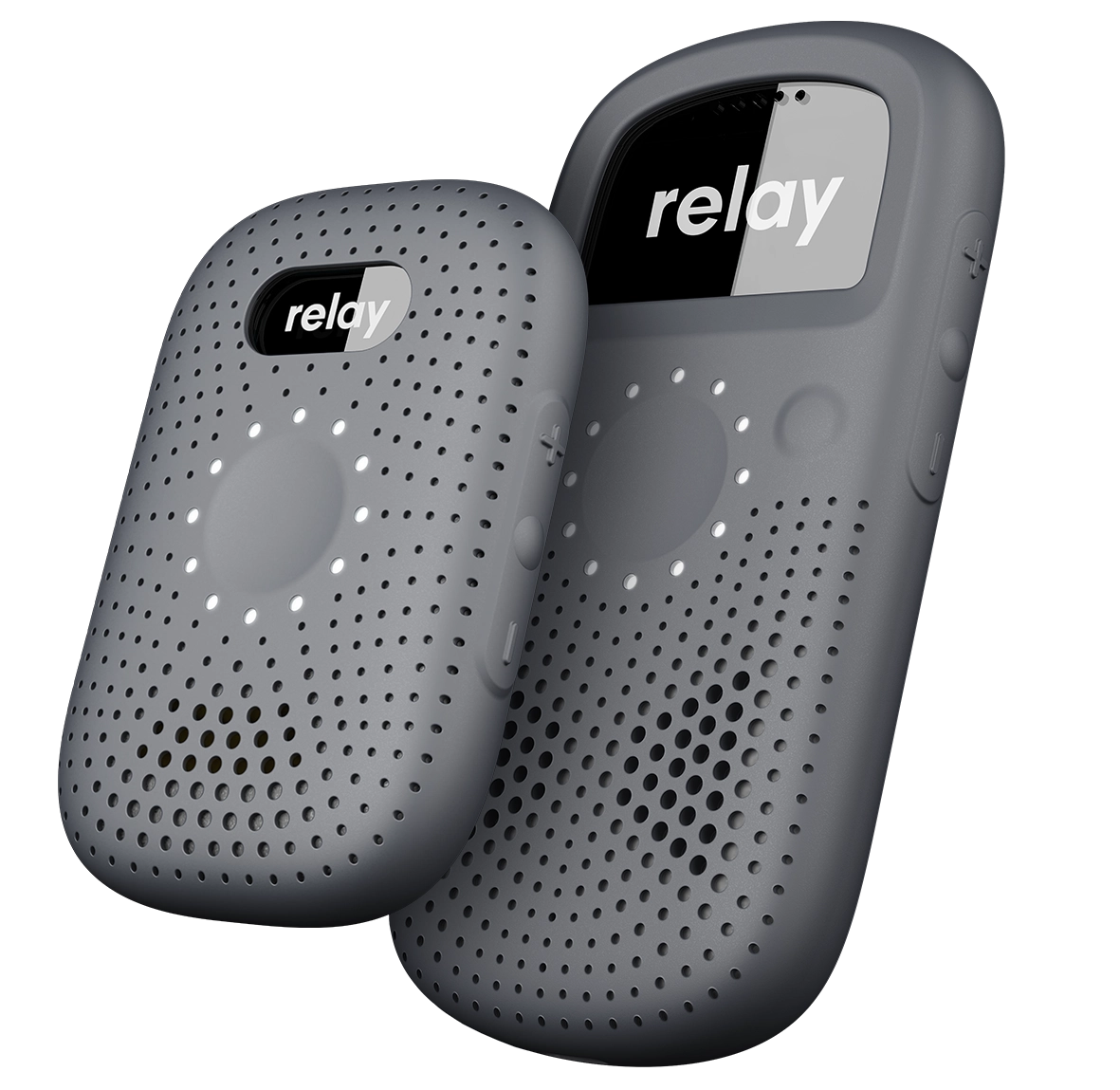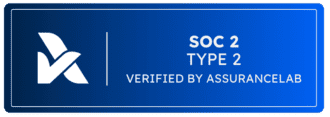Industrial environments can be unpredictable, and when emergencies happen, things can get complicated quickly. Especially when you throw hazardous materials, dangerous machinery, or language barriers into the mix.
Effective emergency preparedness goes beyond compliance; it safeguards lives, protects assets, and minimizes operational disruption. Emergencies can lead to severe injuries, fatalities, extensive property damage, and significant machine downtime.
Having the right workplace emergency evacuation plan and communication tools (like Relay!) in place can prevent minor disruptions from becoming major disasters.
This blog outlines some of the ways Relay can help your team handle emergency evacuations in the workplace with confidence, from streamlining clear communication with customizable mass alert workflows to reviewing past locations or conversations during training sessions.
While we include feedback from real customers and aim to offer useful ideas, we always recommend consulting with your own trusted experts and adapting your workplace emergency evacuation plans to fit the unique needs of your organization and property.
1. Being a Tool You Can Rely On
We often get asked, “What happens if cellular or Wi-Fi crashes during an emergency event?” During emergency situations like evacuations, when having reliable communication is important, you need technology you can rely on. No tool is useful if it doesn’t work when you need it most.
Relay is built with redundant network connectivity, seamlessly switching between Wi-Fi and multiple cellular networks. That means, you always have the strongest signal possible, even in challenging environments, such as those with concrete walls or a metal roof. Our nationwide coverage also ensures managers can be in the know of all emergency situations whether they’re at home or across the country.
We strive to ensure the most uninterrupted communication during power outages, network congestion, or infrastructure damage, which is crucial for coordinating evacuations and ensuring employee safety. Many of our customers concerned about emergency preparedness will also invest in their own infrastructure resilience, such as starlink and battery backups for Wi-Fi.
2. Easy to Use Panic Button with Two-Way Communication
Unlike other worker safety tools like traditional panic buttons that only allow one-way messaging, Relay supports two-way communication.
Two-way communication is essential during emergencies when you and your team need more information about the situation, like what supplies should be brought to the scene, where the incident occurred, and if emergency personnel or an evacuation is necessary.
Relay’s panic button is easily triggered when help is needed by quickly pushing the talk button five times on any of our devices. Doing so automatically shares the worker’s indoor location if enabled and pulls everyone who needs to be aware into a designated channel.
During evacuations, two-ways communication can be leveraged by industrial teams to confirm when employees reach muster stations, report hazards, or request assistance, ensuring no one is left behind.
3. Mass Alert Workflows
Relay’s mass alert workflows allow teams to create custom incident response protocols tailored to specific emergencies, like an ammonia leak vs. a fire vs. an injured worker. Completely customizable, industrial businesses can choose their own codes or trigger phrases.
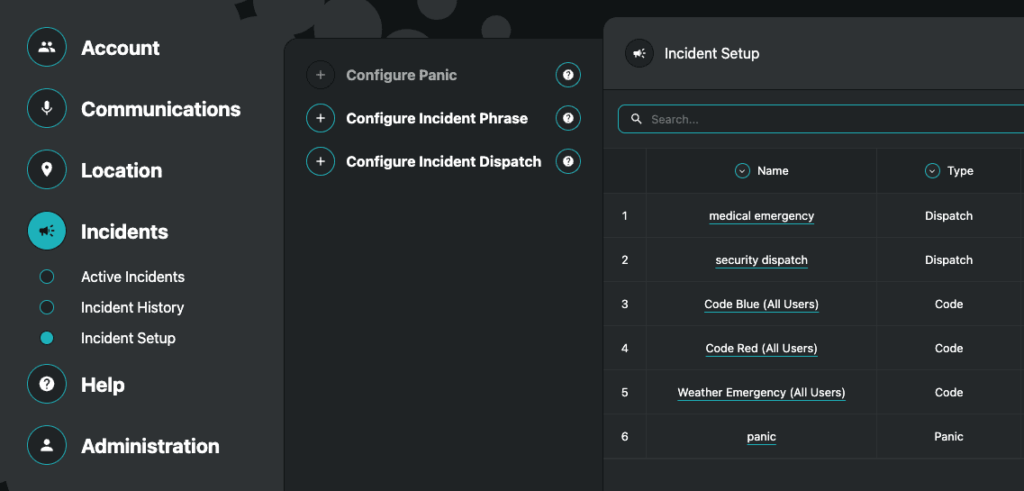
Unlike traditional color codes that can be confusing or misinterpreted, i.e. red for fire or black for active threat, these workflows provide detailed, situation-specific instructions that streamline communication. Such as, who triggered the incident and where everyone should go or avoid.

Additionally, allowing too many people to participate in the conversation can lead to unnecessary chatter and risk important messages getting lost. Especially important for large teams, Relay allows you to limit communications to key personnel for each type of situation, helping maintain clarity and preventing information overload.
Here’s an example: In a chemical spill scenario, a predefined workflow on Relay can trigger automatic alerts when “code orange” is spoken into a device, providing step-by-step evacuation instructions for everyone, but only safety officers and team leads can participate in the conversation, ensuring a coordinated response.
By setting up workflows in the Relay Dashboard before an incident takes place, employees will be better prepared to deal with emergency situations.
4. Enhanced Decision Making with Real-Time Data
In addition to Relay’s worker safety and two-way communication capabilities, Relay also comes with operational insights so you can make better decisions in real-time.
By viewing worker’s locations in real-time, you can see who is closest to help during an emergency or make sure all devices are in the right place after an evacuation has been called.
5. Tracking Muster Station Attendance
Accurate headcounts are crucial during evacuations, yet many industrial business’ processes are prone to manual errors or involve utilizing expensive automated muster point solutions.
Relay’s GPS location tracking and two-way communication enable efficient attendance checks at muster stations, ensuring no one is overlooked. Team leads can confirm attendance in real-time and report directly to emergency coordinators, speeding up the accountability process.
If someone is unaccounted for, supervisors can use Relay to quickly see where their device is located or reach out and determine their status, whether they need assistance or took an alternate route.
6. Language Translation for Diverse Teams
In multicultural industrial workplaces, language barriers can hinder effective communication during emergencies. Misunderstanding instructions, especially during evacuations, can be deadly.
OSHA estimates that language barriers contribute to 25% of workplace incidents.
Relay’s built-in language translation enhancement, TeamTranslate™, ensures that evacuation instructions can be understood by all employees, regardless of their native language.
Here’s how it works: Each Relay device will be set up in the worker’s preferred language. All incoming messages will play out in their original form, and then instantly be translated to the worker’s chosen language.
Real-time language translation is not only invaluable during high-stress situations. It also enhances training sessions, ensuring every worker knows the safety protocols before an incident occurs, boosts team morale, and employee satisfaction.

7. Enhanced Trainings with Real-Time Visibility
After an evacuation, reviewing exactly what happened with your team is important so you can recognize what could be improved for next time. This preparation can boost confidence within your team, making it more likely that safety protocols are accurately followed in the future.
Using Relay’s real-time data visibility, including location and message history, you can see exactly where everyone was when the incident occurred, the path they traveled, and what they said.
Customer Story: After an emergency situation involving nearby gun shots, Army Sergeant First Class Michael Traver pulled up the transcripts and device locations in Relay so that staff could analyze what happened and better prepare for next time as a team. The organization has always had plans in place, but this allowed them to track their success and evolve plans as need be. Read the full story here.
When it comes to emergency evacuation training, Relay’s real-time data empowers leadership to make informed decisions, adjust emergency evacuation plans, and allocate resources and personnel more efficiently.
*Relay’s location tracking and message history need to be enabled in order to be leveraged for these scenarios.
8. Post-Event Data Review for OSHA Compliance
Relay’s detailed transcripts, location logs, and communication history, may also help industrial organizations comply with OSHA requirements.
Reviewing post-evacuation data helps organizations meet OSHA’s Emergency Action Plan standards, which emphasize the need for training and drills.
By incorporating real-scenario and training learnings into their Emergency Action Plan, companies can continuously improve safety measures and response times.
9. Cost Savings by Integrating with Existing Systems
Sometimes, a broadcast is the best way to share evacuation instructions with your entire workforce, especially if not everyone is going to carry a communications device.
Relay can integrate with existing overhead PA systems, reducing the need for additional communication infrastructure. By eliminating the costs associated with maintaining separate systems, Relay provides a cost-effective solution without compromising safety or functionality.
One Relay customer, a large-scale produce company, saved a quarter of a million dollars in overhead system upgrades by plugging in a Relay device to their existing overhead infrastructure using a USB-C converter from Amazon. When incident instructions are played on the Relay, they also get broadcasted to everyone. Since Relay charges with a USB-C, it never needs to be unplugged.
By integrating with existing PA systems, Relay not only enhances communication efficiency while maintaining budget constraints, it can also translate those broadcasts into another language.
10. Send Messages Everyone Can Hear
We often hear feedback that overhead systems are great for mass communications, but only in certain areas such as hallways or on the plant floor. Managers in their office or workers outside or off-site may miss important messages, such as an evacuation notice not to return to the facility.
With Relay, you can broadcast messages to all Relay devices, including our app and dashboard, regardless of where they are located or what channel they’re currently on. You can also set up broadcast messages in advance, whether for everyday reminders or scheduling evacuation drill instructions.
Similarly, our Summon capability pulls all devices into the same channel at once so you can share important information with everyone, while also allowing people to communicate back. We’ve seen this used in situations such as to announce a VIP visitor is about to arrive.
On the other hand, if you need to reach one person directly during an evacuation, Relay also gives you the flexibility to communicate 1:1, similar to a phone call.
Revolutionize your Emergency Evacuation Plans with Relay
Having the right emergency evacuation procedures in the workplace are essential for safeguarding lives and maintaining operational continuity in industrial environments. Relay empowers teams with reliable communication, advanced workflows, language translation, and post-event analysis, ensuring a coordinated and efficient response to any emergency.
By integrating Relay’s manufacturing communication system into your workplace emergency evacuation plan, your organization can enhance safety, streamline communication, and build confidence in handling evacuations effectively.
We are always expanding our offerings to provide frontline teams with even more ways to communicate, utilize data, and maintain a safe working environment effectively. Stay tuned for more ways Relay can enhance your operations and evacuation procedures.
Contact us to learn more about how Relay can revolutionize your emergency evacuation plans.
